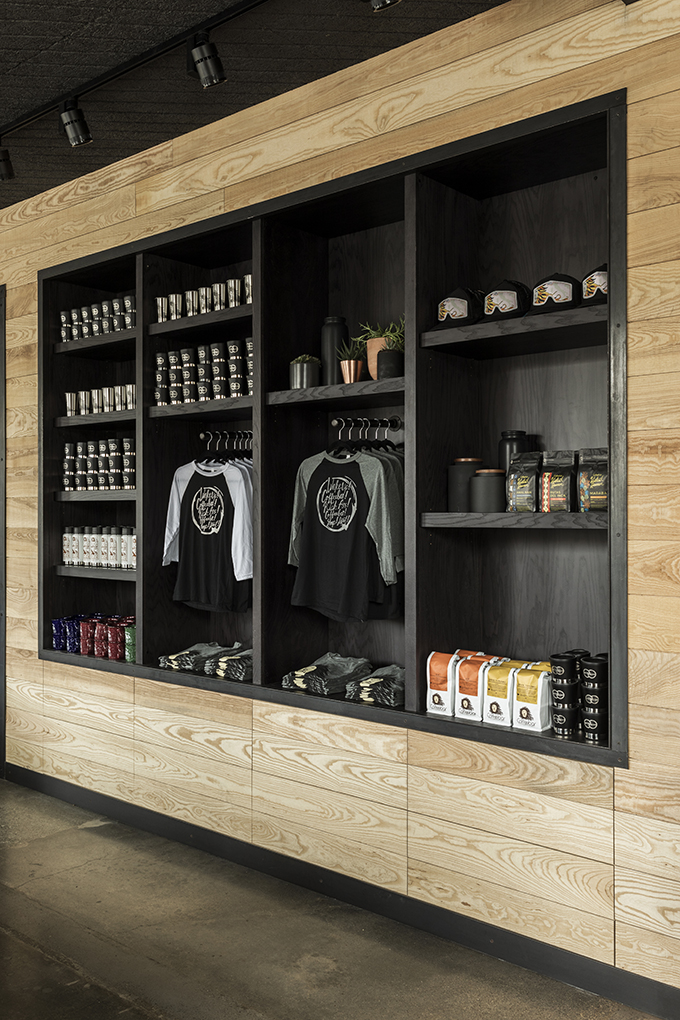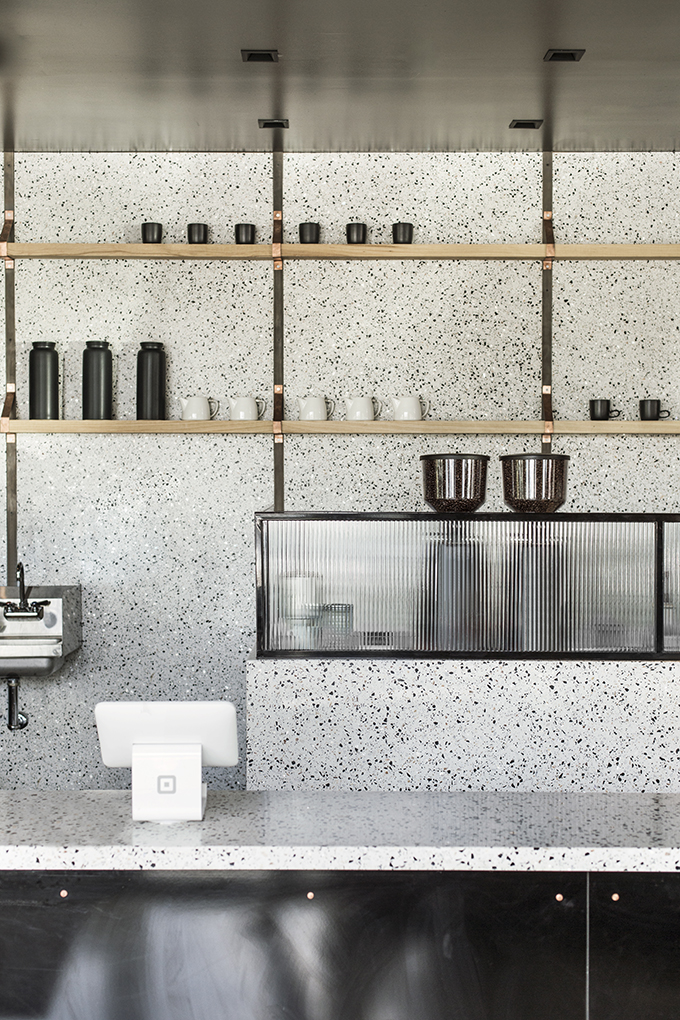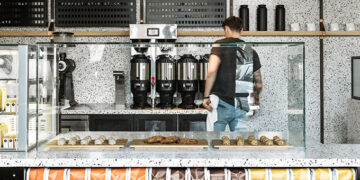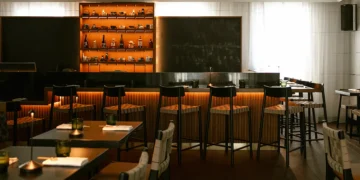
Coffee culture is around us and dominating our daily lives even if you are not a coffee drinker. Owning a coffee shop also comes for many as a dream, while they do not realize that the quality of your brew can make or break your coffee shop. As coffee aficionados become more discerning, the demand for top-notch products grows. From the beans you select to the equipment you use, every detail matters. DSCENE editors consulted with their favourite coffee shop owners to create a guide for enthusiastic entrepreneurs through the essential products needed to create an exceptional coffee experience.
Whether you are dreaming of or actually opening a coffee shop, or you are just a fan of coffee here’s our little cafe guide from interiors to various coffee shop products:
Coffee Beans and Grounds
The foundation of any great coffee begins with the beans. Understanding the differences between types of coffee beans is crucial. Arabica and Robusta are the two primary species of coffee beans. Arabica beans are known for their smooth, complex flavors and lower caffeine content. They thrive at higher altitudes and are often more expensive due to their delicate nature. On the other hand, Robusta beans have a stronger, more bitter flavor and higher caffeine content, making them a popular choice for espresso blends.
Freshness is another critical factor in achieving the perfect brew. Coffee beans start to lose their flavor soon after roasting, so it’s essential to store them properly. Airtight containers and cool, dark places help preserve their freshness. Grinding the beans just before brewing is also vital, as pre-ground coffee quickly loses its aroma and taste.
When it comes to grinding, the choice of grinder can significantly impact the quality of your coffee. Burr grinders are preferred over blade grinders because they provide a consistent grind size, which is essential for uniform extraction. Different brewing methods require different grind sizes. For example, espresso needs a fine grind, while a French press requires a coarse grind.

Brewing Equipment
Investing in high-quality brewing equipment is paramount for any coffee shop. Espresso machines are the centerpiece of many establishments. They come in various types, including manual, semi-automatic, automatic, and super-automatic. Manual machines give baristas full control over the brewing process, while super-automatic machines handle everything from grinding to frothing, making them ideal for busy environments.
For drip coffee, there are several options to consider. Traditional drip coffee makers are a staple in many cafes, offering consistency and ease of use. For those looking to provide a more artisanal experience, the French press and pour-over methods are excellent choices. These methods allow for greater control over the brewing process, resulting in a rich and flavorful cup of coffee. Specialty brewers like the Aeropress and siphon add a touch of novelty and can attract curious customers.
For convenience and variety, K-Cup machines are a popular choice. They allow customers to choose from a wide range of flavors and types, including decaf coffee K-Cups for those who prefer or require decaffeinated options. This flexibility can enhance the customer experience and cater to a broader audience.
Syrups and Flavorings
Syrups and flavorings are essential for adding variety to your coffee menu. Popular syrup flavors include vanilla, caramel, and hazelnut, while seasonal flavors like pumpkin spice and peppermint can attract customers during specific times of the year. The choice between natural and artificial syrups often comes down to personal preference and customer demand. Natural syrups tend to have a more authentic taste but may be more expensive, while artificial syrups offer a wider range of flavors at a lower cost.
Custom creations can set your coffee shop apart. Mixing different syrups to create unique flavors allows you to offer something that customers can’t find anywhere else. Pay attention to customer favorites and keep an eye on trending flavors to stay ahead of the curve.

Milk and Milk Alternatives
Milk is a critical component in many coffee drinks, from lattes to cappuccinos and on top of the list of any coffee shop products. Offering a variety of milk options can cater to diverse customer preferences. Traditional dairy milk, including whole, skim, and specialty options like half-and-half and cream, are staples in any coffee shop. However, the demand for non-dairy alternatives has skyrocketed in recent years.
Soy, almond, oat, and coconut milk are popular choices among customers seeking lactose-free or vegan options. Each type of milk has its unique properties, affecting the texture and flavor of the final drink. For example, oat milk froths exceptionally well and has a creamy texture, making it a favorite for lattes and cappuccinos.
Coffee Shop Interior and Location
When opening a coffee shop, both the interior design and the location are crucial factors that significantly impact its success. A well-designed, cozy interior creates a welcoming atmosphere, drawing customers in and encouraging them to stay. Thoughtful design elements such as comfortable seating, warm lighting, and carefully chosen decor not only enhance the coffee experience but also foster a sense of community. This ambiance makes the coffee shop a preferred spot for socializing, working, or simply unwinding, encouraging customers to linger and make additional purchases.
However, even the most beautifully designed coffee shop needs to be in the right location to thrive. A prime location with high foot traffic, visibility, and accessibility is essential for attracting a steady stream of customers. The right location can amplify the impact of the interior design, making the coffee shop a convenient and desirable destination. When the location is strategically chosen, paired with a cozy and inviting interior, the coffee shop becomes a memorable experience that stands out in a competitive market. Together, a well-chosen location and a thoughtfully designed interior create a powerful combination that drives customer loyalty, repeat visits, and ultimately, the long-term success of the business.
RELATED: Interview With Zaytinya Restaurant’s Chef Michael Costa
Cups, Lids, & Accessories
The presentation of your coffee is just as important as the taste and so are the coffee shop products rounding up your packaging. To-go cups and lids play a significant role in the customer experience. Quality cups that keep the coffee hot and are comfortable to hold can leave a lasting impression. Eco-friendly options, such as biodegradable or compostable cups, are becoming increasingly popular as consumers become more environmentally conscious.
Reusable cups offer a sustainable alternative and can also serve as a marketing tool. Many coffee shops incentivize customers to bring their cups by offering discounts or loyalty points. This not only reduces waste but also fosters a sense of community and loyalty among customers.
Finally, creating an exceptional coffee experience requires attention to detail and investment in quality products. From selecting the right coffee beans and brewing equipment to offering a variety of syrups, milk alternatives, and accessories, every element plays a crucial role. By prioritizing quality and consistency, coffee shop owners can elevate their offerings and create a memorable experience for their customers.




















Had a coffee shop ! I wish i was thinking about some of these ❤️
in terior is also very important when wanting your coffee shop to succeed, also every interior design doesnt work for every location… the one above could only work in some more corprate building etc. But good, welcoming and relaxing vibe will keep people wanting to come to your coffee shop. Another thing is trying to make them leave tho.